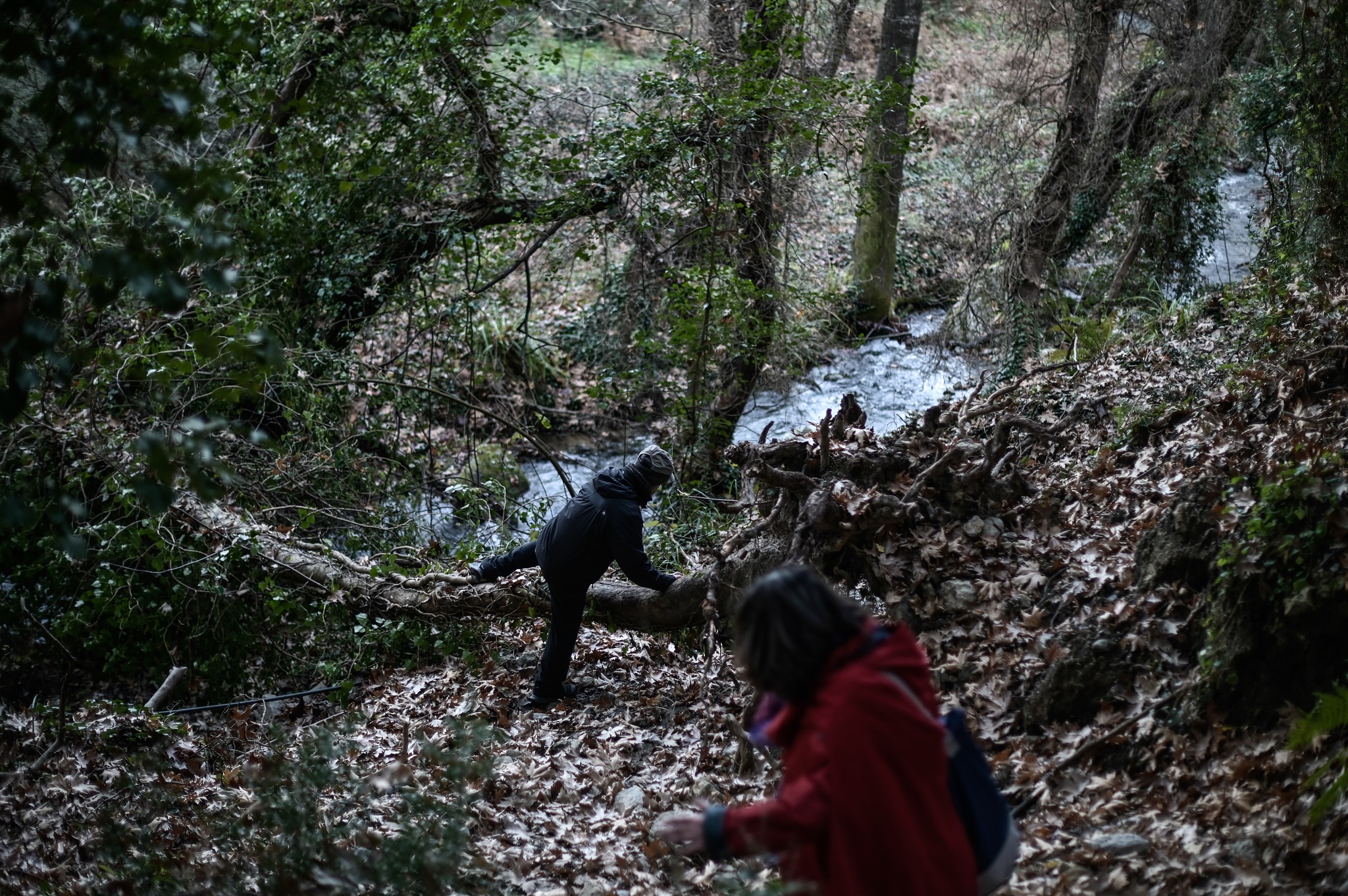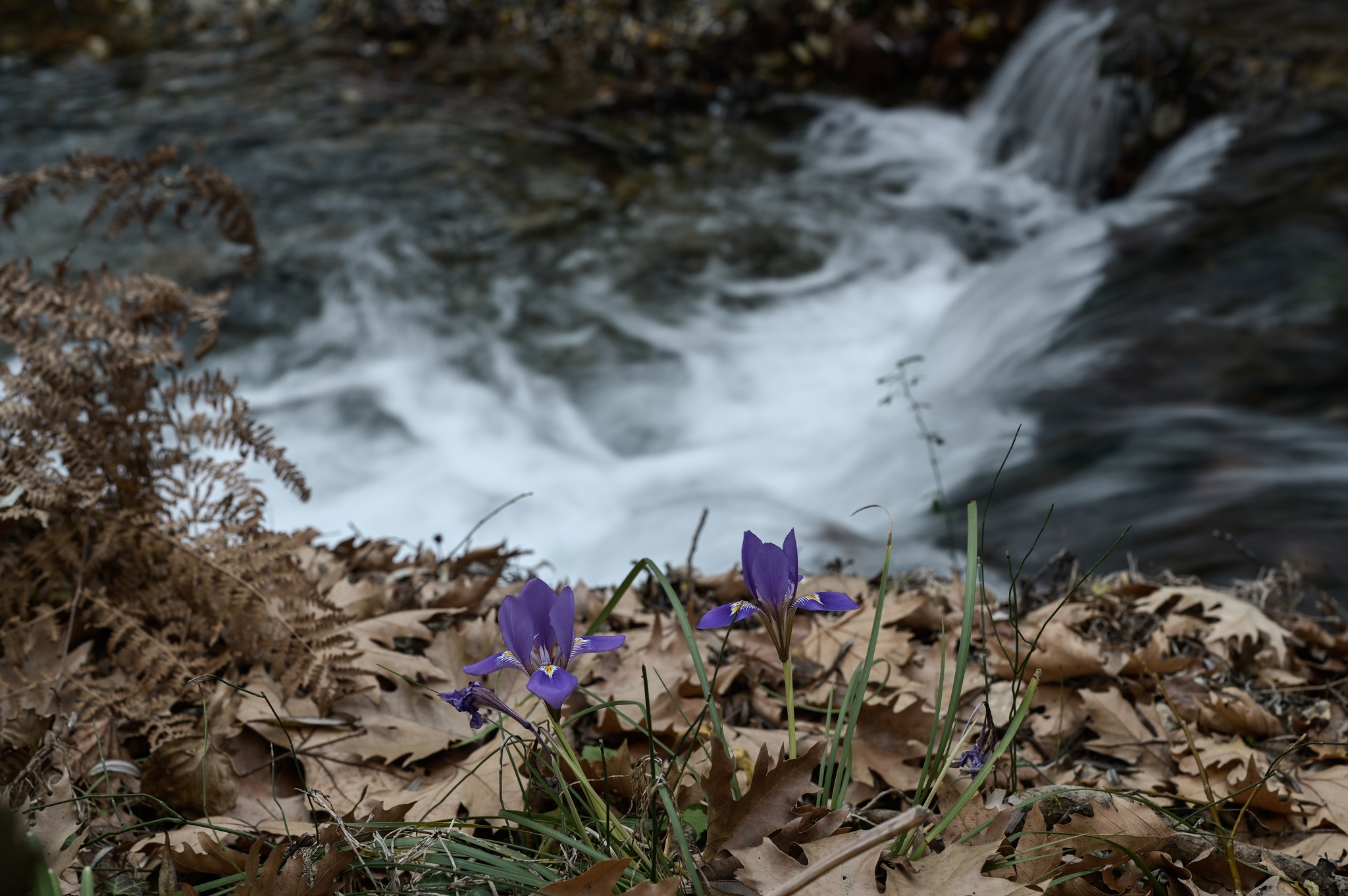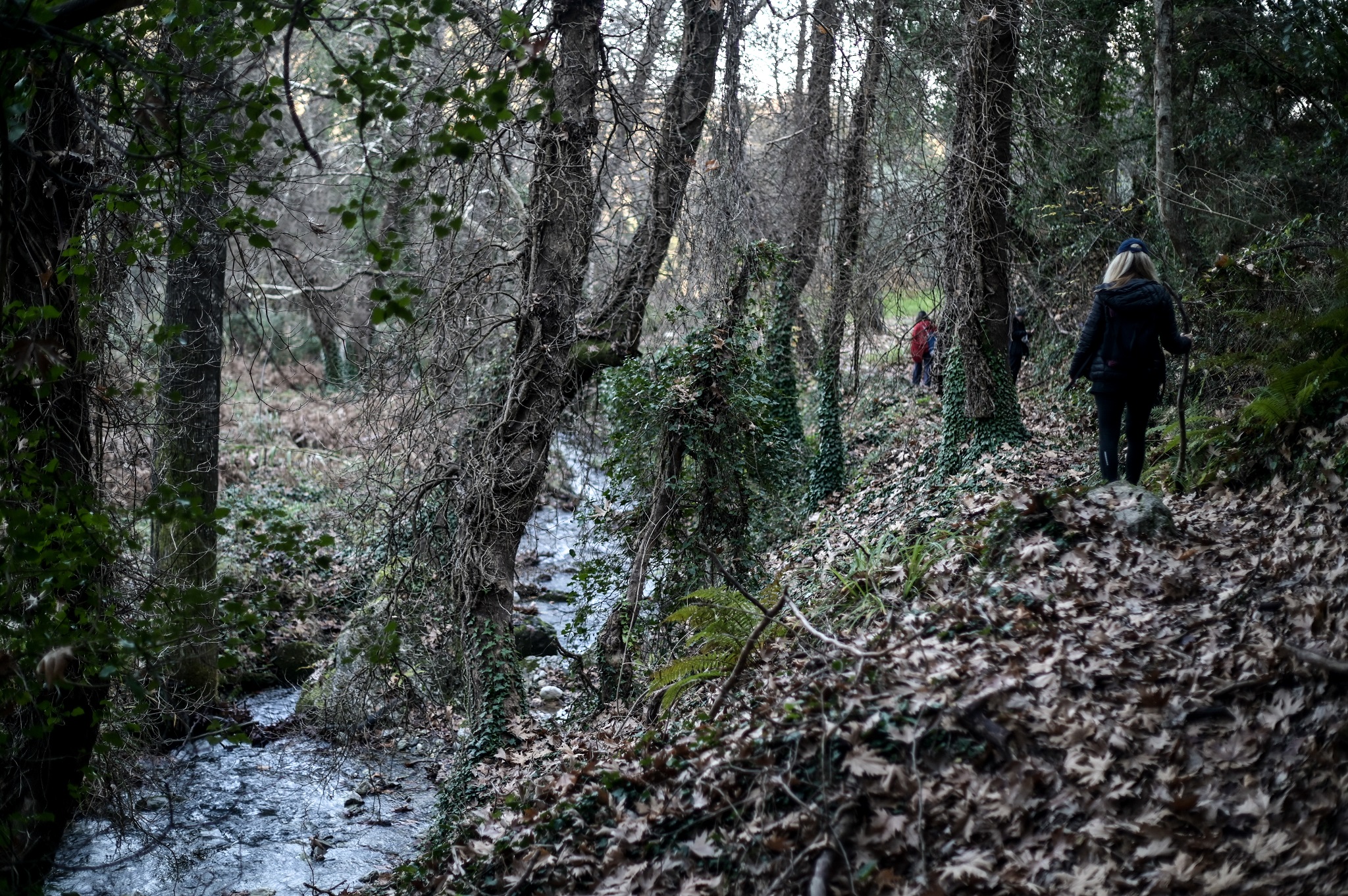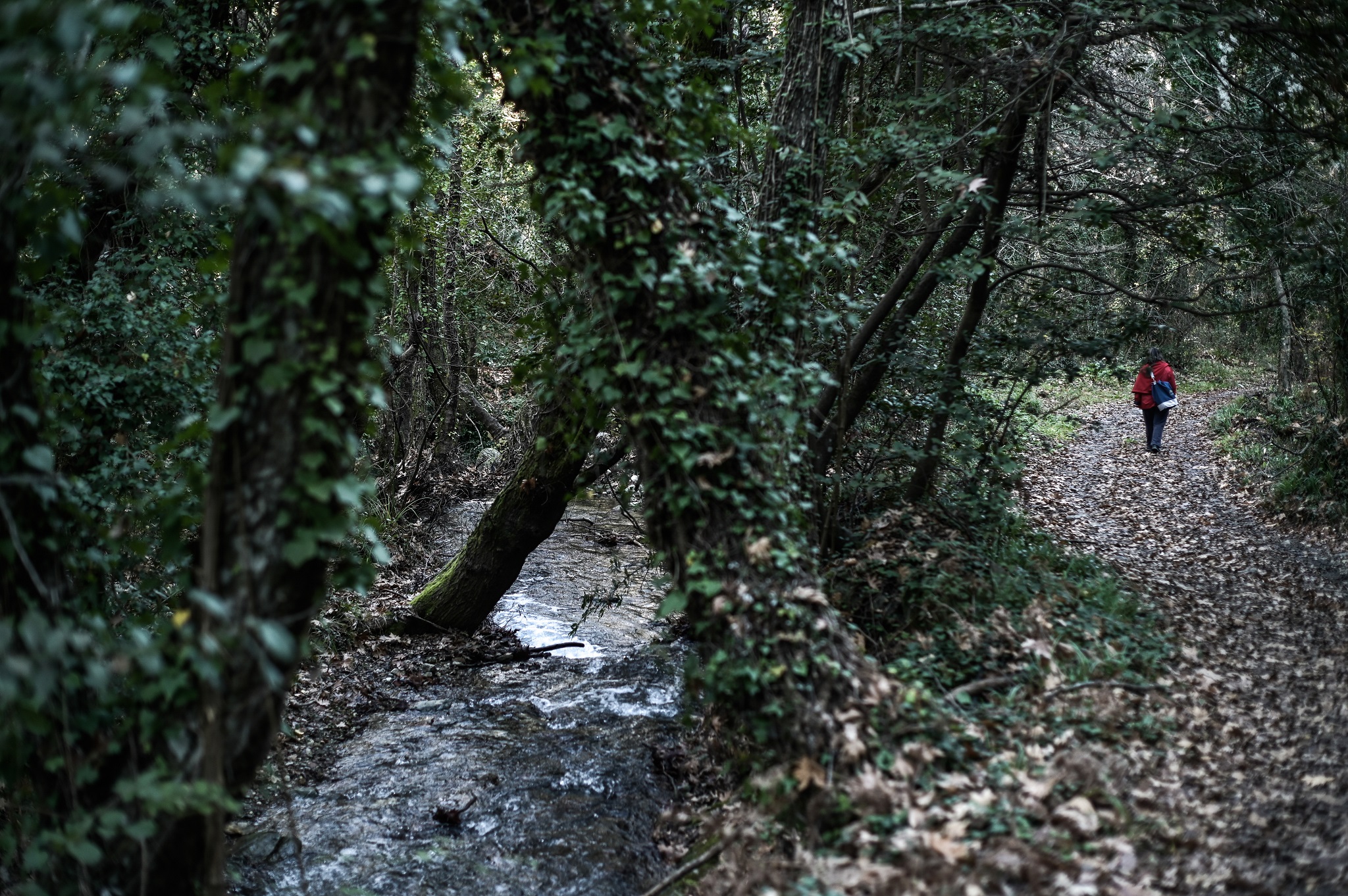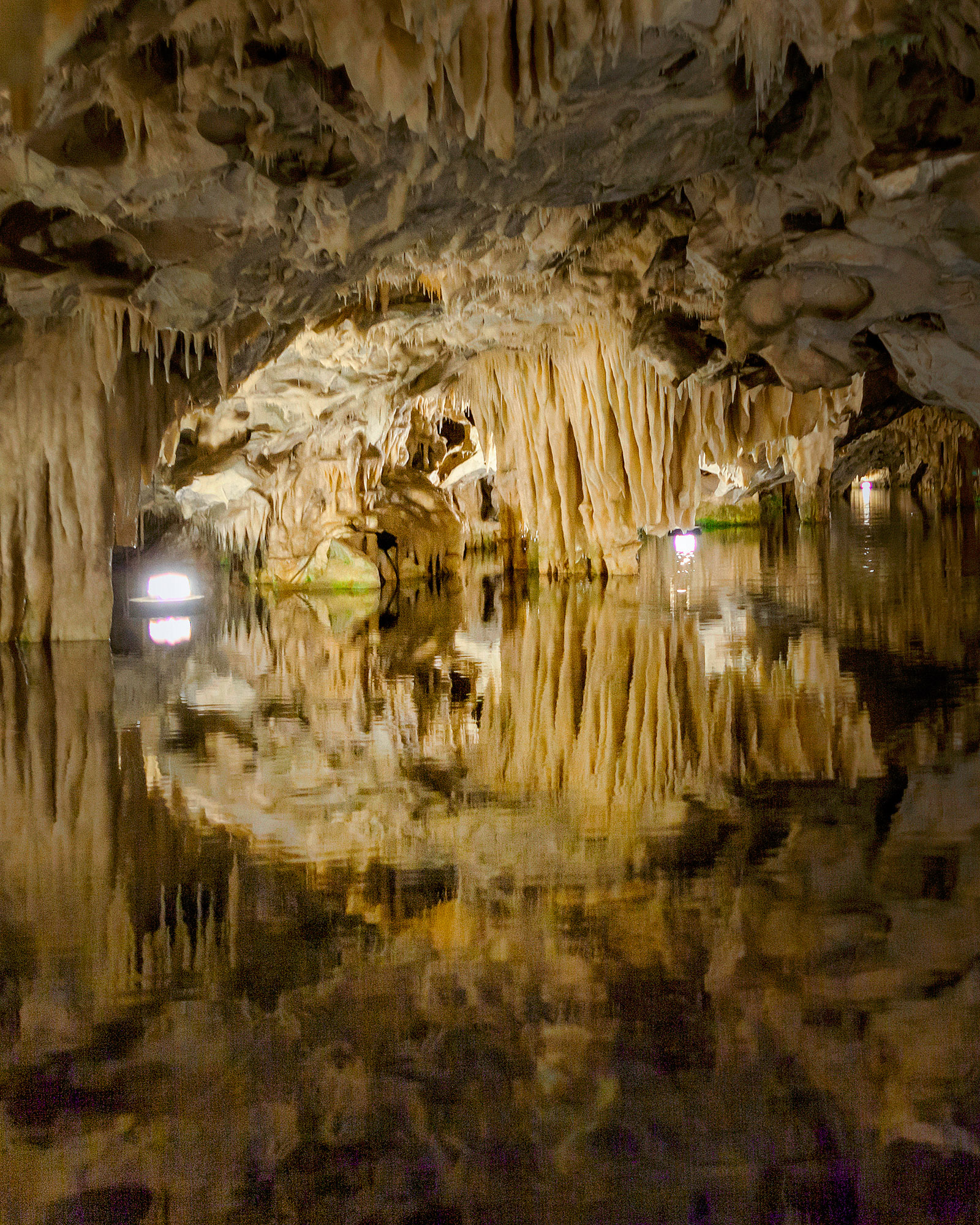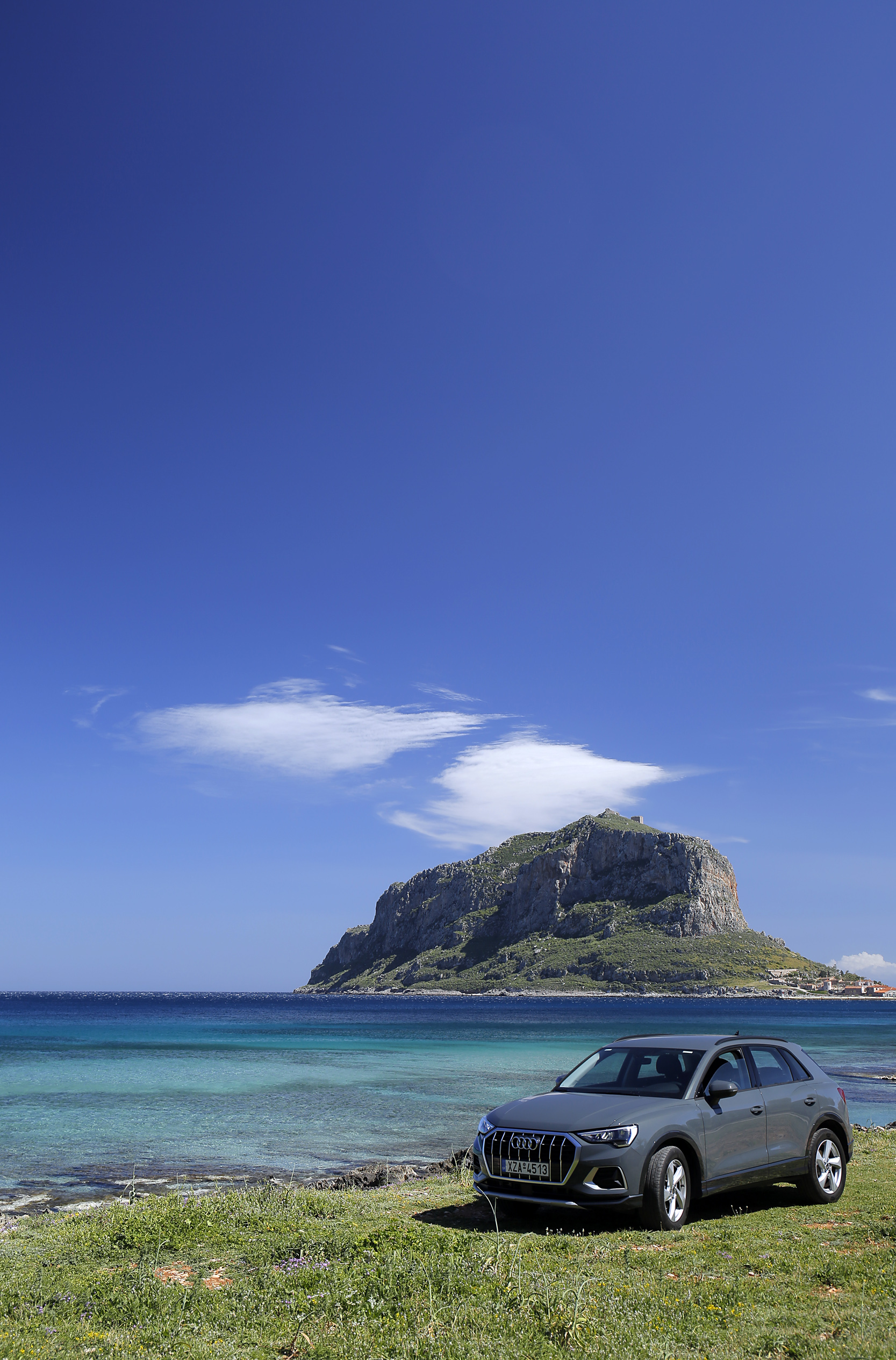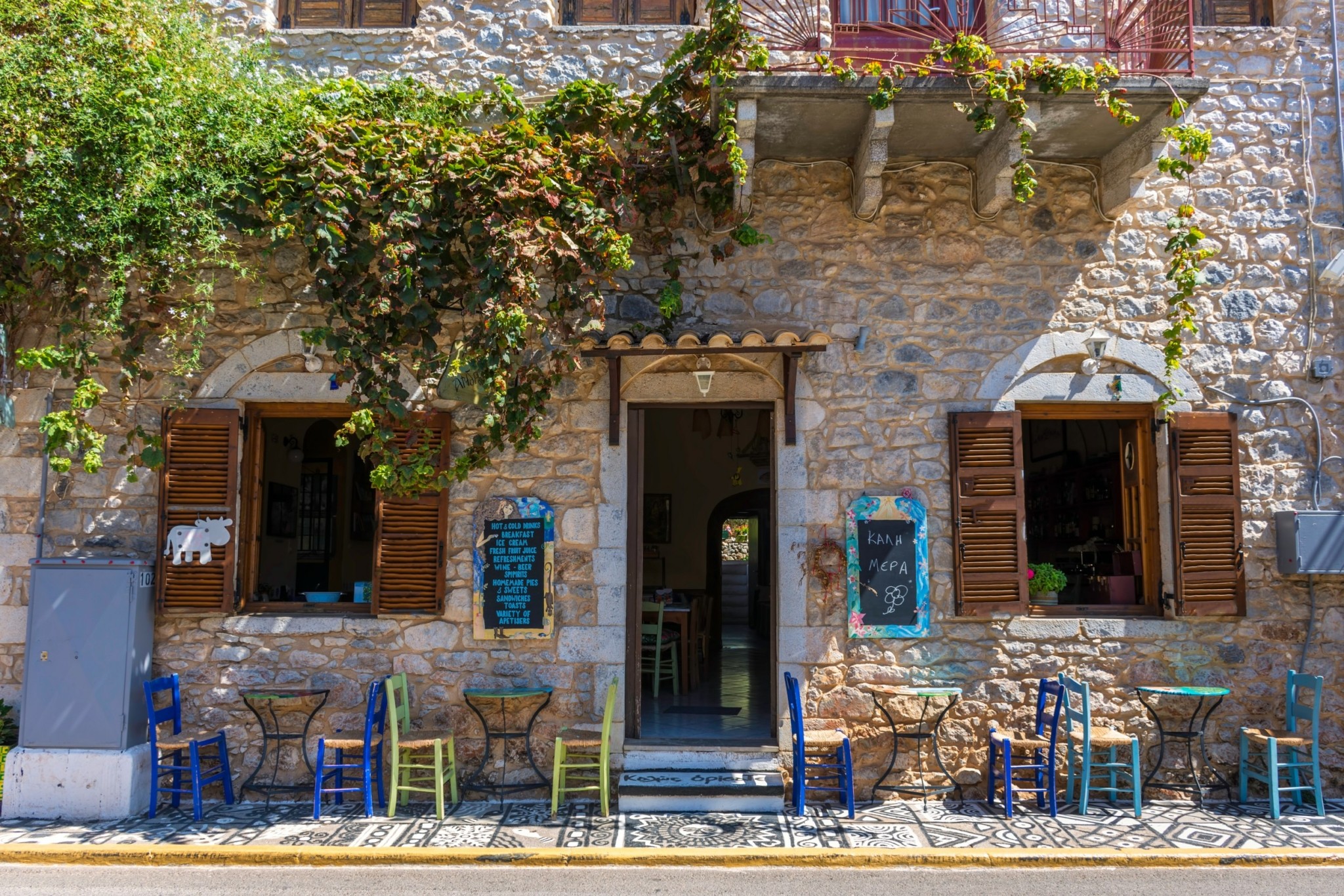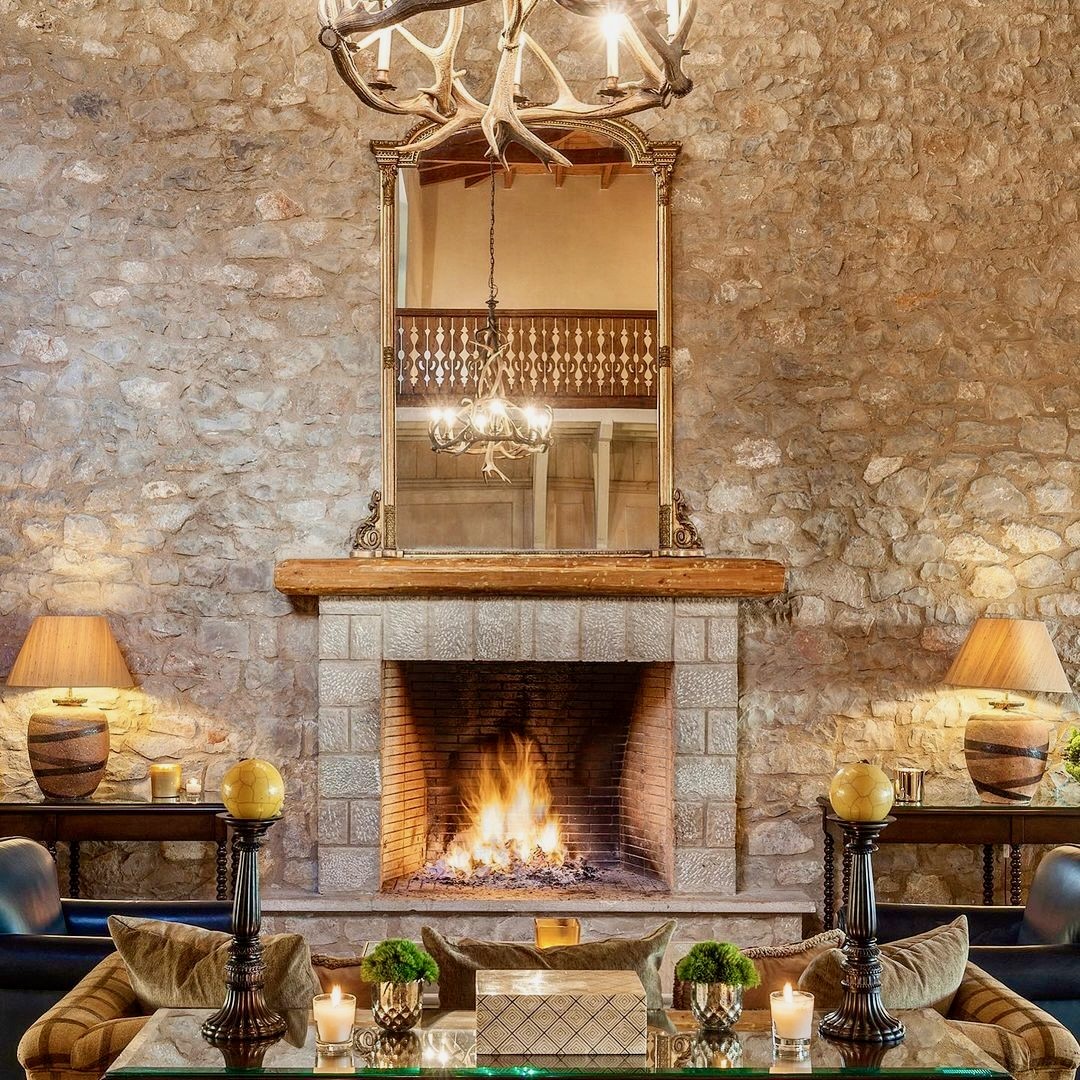Unsurprisingly, the peak travel season remains firmly tethered to the classic Greek summer, especially the period from mid-July to mid-August. During this time, most travellers set their sights on the renowned seaside spots and attractions, mainly across Greece’s islands. Laconia, however, retains an essence of mystery year-round. with a heartland that holds numerous beauties that only a handful venture to see during the summer.
Indeed, most tourists heading to the Peloponnese are likely to visit Monemvasia and the castle town of Mystras, Gytheio or the coastal landscapes of Laconian Mani. Consequently, places such as the gorge of the river Kastora remain widely unknown, visited chiefly by in-the-know nature enthusiasts who prefer to spend their summer trips in mountainous destinations, hiking in less sunny and more refreshing nature alongside beautiful flowing streams. The surroundings of Kastoreio village make for an exemplary retreat for that type of tourist, who equates holidays with hiking, relaxation and tranquility in places that are delightful especially from summer to autumn.
Natural splendour and running waters
In the northeastern slopes of Mt Taygetos lies the Kastoras Gorge, named after the river Kastor. This river, like others in the region, flows into the Evrotas, the principal river of Laconia. The river’s name echoes the legendary figure Kastor, who alongside his brother Pollux, were in antiquity known as the Dioscuri. Beyond the gorge, the river gives its name to the village of Kastoreio, which stands nearby. This village is a top destination for those who enjoy exploring lush natural landscapes.
Kastoreio wasn’t always known by this name. Until its official renaming in 1921, it was known as Kastania, named for the abundance of chestnut trees in the vicinity. The village is situated at an altitude of 485 metres on the fringes of Mt Taygetos. Its earliest origins are lost to historical time, and it might have emerged following an older Byzantine city. Notably, when the Turks arrived here in 1463, not only did the village exist, but it ferverently resisted occupation. This resistance was so robust that Sultan Mehmed II had to personally oversee the operations to capture the local castle, which now stands as a ruin approximately a kilometre from modern-day Kastoreio.
Old Kastania was a thriving main village, with its inhabitants actively participating in the Greek War of Independence. After the formation of the Greek state, it served as the capital of the Municipality of Pellana and boasted a population of 1,630 by 1940. However, after the 1970s, it followed the fate of much of old rural Greece. Today, the village continues to serve the broader region with services and shops, retaining a population of 466, as per the 2011 census (with 2021 data pending). It remains a place of breathtaking natural beauty, enveloped in verdant surroundings, mountain springs, and clear flowing waters.
The region stands out as an idyllic spot for nature enthusiasts due to its abundance of astonishingly beautiful and easily accessible gorges. Consider the Kastora Gorge, for instance. Here, one can embark on a serene trail amidst plane trees, chestnut trees, and walnut trees. This trail is suitable even for the most novice walker, and is easy enough for children. The entire journey takes 35 minutes, with the first 20 minutes of the route running alongside the river, and the remaining 15 minutes tracing a carved footpath up to the famed Marmaro Bridge. Near this bridge, two stone seating areas have been constructed, offering a spot for relaxation before you set off for your return. If you have the stamina for an additional 10-minute uphill trek, it’s worth the effort to visit the hermitage of Loukas, where you’ll find a small chapel built inside a cave.
Beyond this, there are numerous trails for those who are more experienced and resilient walkers. Heading northwest, for instance, there’s an ascent featuring bridges and alternating wooden steps. Once you’re gazing over the vastness of Kastoreio, you’ll realise that the end of this climb is just the beginning of the main part of the Gorge of the Mills (or Vrysiotiko). This gorge starts from the aforementioned Marmaro Bridge and stretches all the way to the mountainous village of Georgitsi, spanning a significant distance that requires a 4.5-hour walk. Continue westward, and during the winter or spring, you’ll encounter a rapid stream, eventually leading to the ruins of the old mills of Georgitsi.
The surrounding region holds many more wonders deserving of their own dedicated write-ups, perhaps even a comprehensive travel feature. Before reaching Kastoreio, between the peaks of Xerovouna (Saint John) and Pyrgaki, there’s an entrance to another gorge, standing at an altitude of 1,000 metres. This is Louká gorge, and descending through it will take you between five to six hours. As it dries up during the summer, springtime is the most favourable time for a visit. Closer to Kastoreio, you’ll come upon the quaint chapel of Panagia Misosporitissa, set against the rocks, offering an awe-inspiring view. At the entrance of the village, an enchanting landscape unfolds with the shade of ancient plane trees and springs. Notably, one of these springs, named Vagia, provides water of exceptional quality. A little further down, you can also spot a 19th-century watermill that continues to operate.
Getting to Kastoreio
Kastoreio is conveniently located near Sparta, being just 17 kilometres away from the busy town. The roads are in good condition, ensuring a journey of roughly 20 minutes. Reaching Kastoreio from Athens is now even more straightforward due to the new highways beyond Tripoli, which have significantly reduced the old distances. Although it’s a 225-kilometre journey from Athens, it’ll only take around two and a half to three hours to reach the Kastora river region.
Although many nature enthusiasts and hikers visit the gorge on a day trip, with a base in Sparta, Kastoreio has embraced its modest tourism growth. It offers guesthouses and delightful tavernas serving grilled dishes and traditional cuisine. So, if you wish to spend a few days here, you’ll find everything you need.
Indeed, it’s worth acquainting yourself with the local fish production (trout and salmon), which has given birth to Greece’s first caviar, known as the Taygetos Caviar. This caviar has not only gained local recognition but has also made its mark internationally through cinema. Giannis Gerontidis, from the family that established the business in 1969, participated in the filming of Giannis Smaragdis’s movie, ‘God Loves Caviar’ in 2013.



